7 Luxury Brand Resilience Principles You Can Leverage to Grow Your Profits in Hostile Market Conditions
Luxury brand resilience typically defies normal business cycles. Even in tough economic times and adversity, luxury brands are often able to weather the storm and ride the waves of market stress. That is not down to luck. It is because luxury brand custodians spend years building and maintaining their brands. The lessons from that which drive luxury brand resilience are relevant even for non-luxury brands, whatever the economic climate.
Here we’re sharing some of these key brand strategy principles which underpin luxury brand resilience so you can apply them to improve your own brand resilience, whether your brand is a luxury brand or non-luxury brand.
1. Luxury Brand Resilience Offers Valuable Lessons for All Brands
There is no magic secret to how luxury brands build such brand loyalty and resilience. They are disciplined in applying a structured system of thinking about branding strategy. They play by some very clear rules which help set the direction and provide consistency in how they manage their brand assets — all of which is doable by non-luxury B2B and B2C businesses, product or service, when you understand and apply a strong brand strategy system.
In other words, luxury brands have invested a lot of time, effort and money in figuring out the best way to create appeal for their offering which motivates customers to purchase and repurchase.
Fortunately, you can benefit from what they have already learnt without having to go through the process from scratch. Successful luxury brands are built by applying branding lessons which are available to all. The right brand strategy system can help your brand succeed using similar principles, even if it is not a luxury brand so you can build a more resilient business.
2. Luxury Brand Resilience and Profitability is Driven by a Strong Branding Strategy
Sometimes people say that it’s easy to command high prices when competing in a space like luxury goods. However that thinking is flawed because it puts the cart before the horse. The high prices don’t come because a certain category of goods or services is inherently seen as luxury.
The reality is that it’s carefully considered brand strategy work to intentionally build a luxury category that actually helps elevate that category and brand so that it has premium pricing power.
Saint Laurent charging fifteen pounds for their matches is a recent example. Customers aren’t paying for a box of matches, they are paying for a box of matches with the brand promise and cachet of the Saint Laurent brand. [1]
Functionally, the Saint Laurent matches are no different to a Cara box of matches. The difference is the perceptions around each brand. One is seen as an exclusive luxury brand sold in limited numbers to a more elite customer profile and so commands a premium. The other is a good quality everyday ‘supermarket’ brand sold in readily-available high volumes through a broad mass market distribution base.
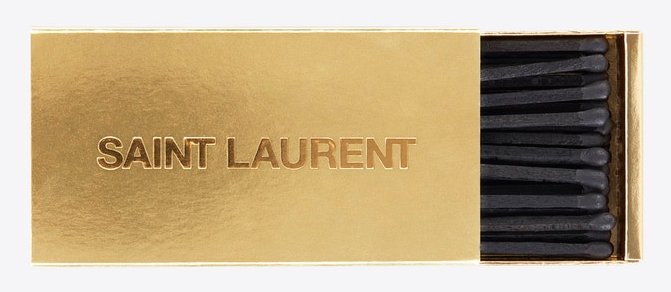
Image via © YSL.com
Consider the categories in which there are luxury brands. Some, like watches or supercars, are complex. The highly skilled labour hours, engineering and manufacturing expertise involved could be expected to dictate a high price.
However many categories dominated by luxury brands, from leather goods to perfumes, consist of pretty simple products. They have low barriers to entry in terms of production or service provision. What makes brands premium is not that they are in a sector which is perceived to be luxurious. Instead, the luxury halo comes from a carefully developed brand strategy and identity.
Related: Top 5 Reasons Why Brand Purpose is The Essential Growth Driver in a Fast Changing World
Typically, the key elements which make a brand premium, such as specific ingredients, provenance story, and style of manufacturing are not inevitable. They are a discretionary part of the brand strategy and brand identity, selected and emphasised to support the brand positioning and messaging.
The luxury story is created, on purpose, as are all the 12 key elements that collectively build a strong brand. That is the essence of branding. This is then followed by the consistent application of a well developed marketing plan and design execution. Both take their direction from the brand strategy because that is what delivers the customer desirability, allure and premium pricing achieved in sales.
Related: Using Buyer Personas to Increase Your Business Profitability
Most brands have some functional benefits, whether they are consumer brands or B2B brands. But only some brands also deliver emotional benefits. To help differentiate themselves and own a particular space, luxury brands work hard to establish and own specific emotional benefits.
That matters because by connecting with your target customer on an emotional level, your brand identity enables you to set a valuation equation for your offering whereby you are not just judged on price. That allows you to use a strong branding strategy to give you more pricing power, as well as helping build customer loyalty.
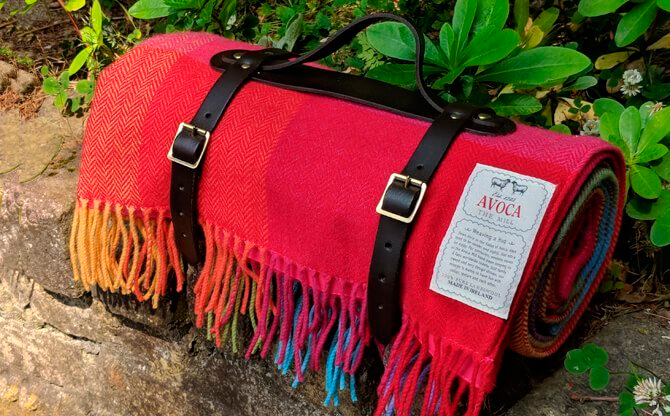
Image via © Avoca
A case study is provided by Irish brand Avoca. They sell their rugs and throws, woven in Ireland’s oldest operating mill, to B2B customers such as hotels and restaurants. Avoca is unable to compete on price with cheap overseas imports. Instead, by emphasising the brand story, Avoca offers a touch of Irish heritage and craftsmanship to customers. Its use of handweaving is a good example. While machine weaving would usually be cheaper, handweaving helps emphasise craftsmanship and forms a reason to believe for that element of the brand identity.
Related: How Branding Strategy is Different to Marketing
We know that sometimes it’s a struggle to build a brand strategy that really engages your ideal customers effectively so we’ve developed three different ways of working with us to help you build your brand, depending on your preferences, so if you’d like us to:
- Build your brand for you – find out more here or get in touch [email protected] or ring +353 1 8322724
- Empower you to build your brand – check out the Persona 7-Figure Business Building & Brand Strategy Mastermind here. This is a 12 week face-to-face, fully interactive, live online programme for non-competing peer groups. You work on your brand with us codifying and mapping out your brand strategy for business growth. Within 12 weeks your brand strategy is fully developed, with implementation already making a difference in your business. Alternatively, join our half-day Branding Accelerator Masterclass for a fast-injection of brand building essentials. Ask about our Personal and Corporate Leadership Brand Alignment Masterclass
- Want a DIY solution? check out our how to build a brand eprogramme here and our how to audit your brand yourself eprogramme here
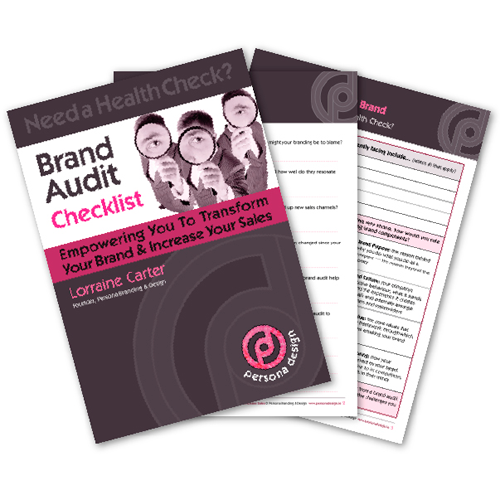
© Persona Design
3. Luxury Brand Resilience Comes From Confidence in Value Propositions
Whether in a contract negotiation with a possible client or seeking to get distribution for a product in a new distribution channel, there is often pressure to drop your price. But as well as damaging the economics of your business model, price discounting suggests to customers that a brand lacks confidence to achieve its desired price point.
This is why top tier luxury brands typically don’t discount under any circumstances. While aspirational mid market brands offload excess stock through discount outlets, top end luxury brands like B2B consultancy McKinsey are known for not offering discounts to win business. The same applies to consumer brands like Louis Vuitton – their artfully crafted shop window displays never include a “sale” sign.
A very interesting example of a brand with an incredible luxury brand resilience is the Hermès Birkin bag. Take a look at this video, from the perspective of it’s primary target audience. There are multiple lessons here that could be applied to both B2B and B2C products and services.
The purpose of price discounting is to increase sales. However, there are ways to do this without price discounting. For example, value added promotions such as a free gift with purchase, a customer-exclusive experience or membership of a club can all help increase sales without damaging the brand’s basic value proposition.
This is why luxury cosmetics brands in duty free often offer duty free exclusives or free gifts such as sample size products, instead of price discounting. Premium brands are careful to drive sales by delivering value, not cutting their prices.
A B2B case study comes from the manufacturer Intuitive Surgical. It emphasises the quality of its products sold to hospitals for robotic surgery provision, thus deemphasizing price in the process. Hospital buyers want to know that the robots will be reliable, enhance a surgeon’s skills and improve patient experience.
They are not going to buy cheaper competitors which are less trustworthy. So Intuitive doesn’t dwell on price and instead emphasises its experience (from a surgical team’s perspective), product quality and unique features such as a vast library of training videos to support its users in hospitals.
Related: 7 Ways Brand Collateral Helps You Grow Your B2B Business Profitably Even in a Hostile Market
4. Competing on Value Not Price Drives Luxury Brand Resilience
Luxury brands can often seem expensive compared to other brands. Unsurprisingly, they often do not emphasise price. Instead, luxury brands prefer to draw customers in to their brand offering without focussing on budget. Often, prices are not advertised or even displayed at the point of sale.
However, price is only one component of what customers regard as value. Every brand has a value proposition, whether it is articulated or not. Your value proposition is one of the outputs from a well developed brand strategy. That is what that brand offers potential customers or users which gives it some perceived value. Pricing can make a brand more or less attractive, but in most cases, the customer has first to be convinced of a brand’s overall value proposition before moving on to consider whether it represents an attractive or unattractive purchase at the price offered.
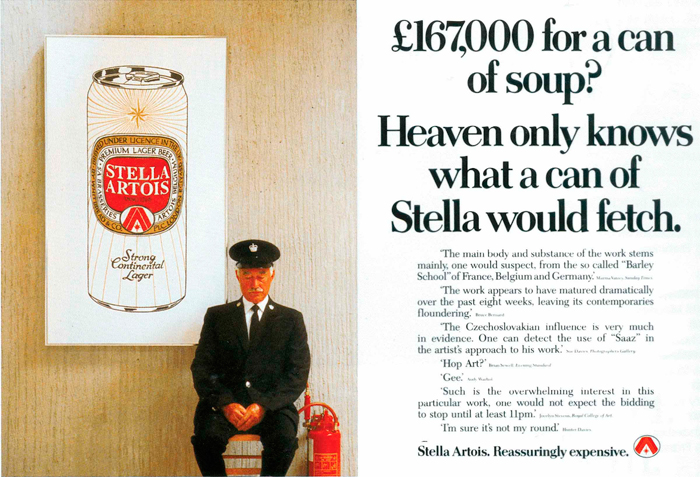
Image via OneClub © Stella Artois
By building a comprehensive value proposition, luxury brands are able to get customers to find them so attractive that they deemphasise pricing in their purchase decision. That is summarised in Stella Artois’ old tagline “Reassuringly Expensive”.
Having convinced purchasers that the value proposition of French made, age-honoured, artisanal beer making techniques made for an attractive value proposition, the beer brand was able not only to relegate price to being an afterthought but also to emphasise its high price as as a proof of delivery for the overall value proposition.
In contrast, an average supermarket own label beer brand which competes only on price, and has no meaningful value proposition of its own, would not be unable to do that.
Related: Discover How to Use Brand Archetypes To Build Your Winning Brand
A case study of a brand which offers a compelling value proposition is Abberley Luxury Yachts. From yacht management, build and sales to luxury yacht chartering, they offer services to very discerning clients who are often time-poor but cash-rich. The brand doesn’t emphasise price but instead a value proposition which reflects the needs of its target users: high service standards in delivering unique, unforgettably amazing experiences. The Abberley Luxury Yachts brand reflects that value proposition.
Related: How to Build a Premium Tech Brand so You’re Not Just Competing on Features, Benefits and Price Discounts
Are you a business leader, manager or entrepreneur who wants to re-evaluate or build your brand strategy so you can ensure brand resilience and effectively leverage trends, to increase your sales? Are you curious about how to build or scale a highly successful standout brand? Join one of our branding masterclasses because they empower you to build your brand, enhance customer experience, expand your market impact and create higher perceived value so you can command a premium.
In fact, the Persona Brand Building Blueprint™ Mastermind is all about fast-tracking you, your brand and your business through the brand building, agile branding strategy process using professional big-brand know-how with proven systems that get results so you can grow your business faster and more effectively.
The programme enables you to make your brand highly visible, different, credible, trustworthy, memorable and much loved amongst your ideal customers so you can become more profitable and leave your competitors way behind. Be The One — your ideal customers’ favourite brand of preferred choice commanding a premium.
If you want a tailor-made solution specifically for your brand then we also provide inhouse bespoke Persona Brand Building Blueprint™ Intensives working with you and your team so you can grow your business faster and more profitably. Contact us to discover more [email protected] or +353 1 8322724
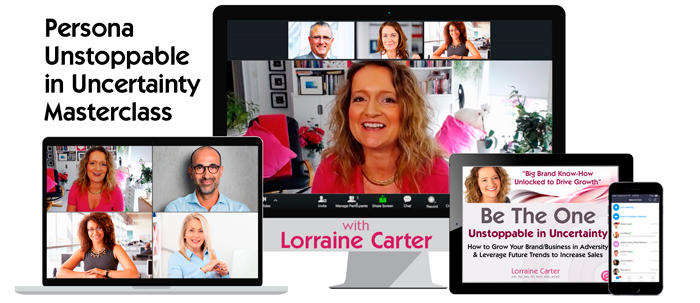
© Persona Design
5. Compelling Brand Stories are Key to Luxury Brand Resilience
No matter what its price point, a brand needs a brand story. Otherwise it is not a brand – it is simply a commoditized product or service. Brand stories are what helps to set your brand apart from competitors, enable the customer to understand why your brand is attractive and, most importantly, embed in customers’ memories and shareability.
Luxury brands tend to be particularly good at creating and communicating engaging brand stories. Indeed, leather house Hermès has crafted such a compelling brand story it has even run whole brand communications on the theme of “Life As a Tale” to emphasise its own brand story.
Brand stories can be founder stories, as shown by how Chanel uses the life of Coco Chanel to illustrate its brand vision and heritage. But brand stories don’t have to be about a person, or past events. Strong, effective brand stories often draw on elements including provenance, supply chain, process and usage. Even the most mundane of brands can craft an attractive brand story, but it does not write itself. Brand stories come from careful insight, reflection and brand building.
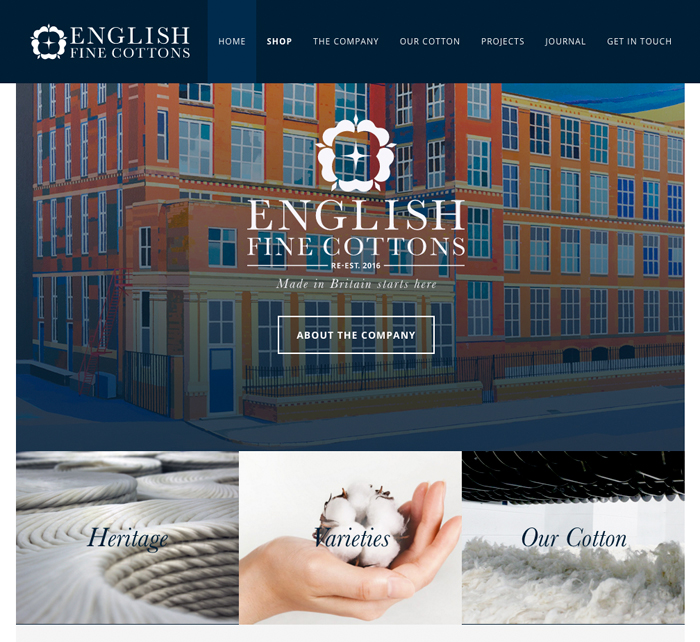
Image via © English Fine Cottons
English Fine Cottons sells cotton to B2B customers such as the clothes and furnishing or interiors trade. It has restarted cotton spinning in the heartland of England’s traditional cotton spinning area dating back to previous centuries.
Fabric manufacture may seem dull, but the brand has built an engaging brand story which emphasises what makes its product attractive, using elements available to it from the facts of its business, such as business provenance and location.
Related: 10 Brands with Phenomenally Innovative Brand Stories That Attract and Retain Loyal Customers
6. Consistency is a Critical Branding Principle in Luxury Brand Resilience
Luxury brands typically deliver smooth, simple seeming but pleasing experiences. The complexity of delivering them is not visible to customers, which is itself part of the value proposition for many such brands. This relies on the brand being as consistent as possible, no matter when, when or how it appears or is experienced.
This is one reason why luxury brands take significant efforts to control their distribution chain and sometimes also their supply chain. They want to ensure consistent quality, supply and brand experience.
Related: Profitable Lessons from Luxury Brand Leaders, Brand Positioning for Premium Pricing
The consistency is carefully planned — nothing about it is accidental or left out chancel. The brand is designed to appear as consistently as possible whatever the situation. That requires thoughtful planning of everything from the customer journey to the brand imagery, brand tone of voice to scripts for sales associates.
Consistency is attractive for customers of a brand whether it is a luxury brand or not because customers prefer knowing that the brand they’re buying is reliable. A lack of consistency undermines trust and without trust customers do not buy and certainly won’t pay a premium.

Image via © Langham
A case study is hospitality group Langham Hotel. Although their portfolio includes properties built in very different styles, they have built their brand to offer key experience clues in the same way wherever they appear. For example, the Langham’s brand visual identity includes a distinctive pink which is consistent across different properties, right down to the bar stool coverings.
Related: 7 Powerful Components Of A Lasting Luxury Brand
If you’d like to discover more about building and maintaining a thriving, high performing, highly profitable standout brand, then get in touch because we’d love to help you make your brand into a profit powerhouse.
- Schedule an chat — we can meet in person online
- Let’s consider a customised plan for you
- And perhaps implement the plan together
- Contact us [email protected] or ring +353 1 8322724 (GMT Dublin/London time 9:00 – 17:30 weekdays)
Lorraine Carter is a branding expert and international speaker delivering talks that inspire and motivate along with masterclasses and workshops that inform and support transformational outcomes fast, and consultancy expertise that solves problems — using agile branding strategy underpinned by professional big-brand know-how — so you can outshine, outperform and leave your competitors way behind.
She enables you to Be The One — your ideal customers’ favourite brand — commanding a premium with 7-figure growth.
Ask about the Persona 7-Figure Business Building and Brand Strategy Mastermind — live, interactively, face-to-face online.
7. A Luxury Brand Delivers a Seamless Customer Experience
The customer experience is an integral part of how a customer interacts with a luxury brand. It helps them to dissociate from price alone, and breaks the ease of comparison to competitive products by introducing an experiential element such as service with carefully orchestrated signature brand details.
It is important that the customer experience feels luxurious, otherwise the premium brand positioning is undermined.
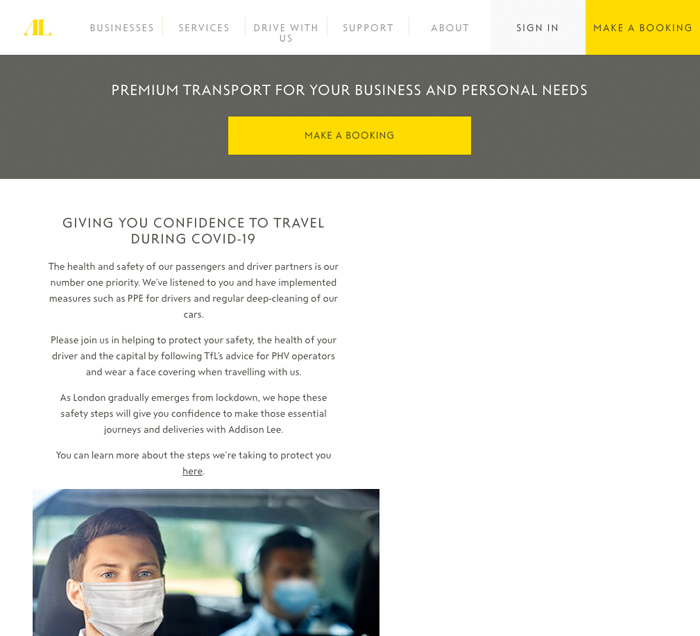
© Addison Lee
Addison Lee provides transport services in London, a market flooded with non-luxury operators competing on price or availability. Addison Lee, by contrast, has used a differentiated customer experience to help carve out its premium position.
The experience can be simple, but small details drive brand loyalty. In Addison Lee’s case, the customer experience involves elements such as account management, smartly dressed drivers and high service standards.
Related: Top 10 Brands for Customer Experience and What You Can Learn From Them
Final Thoughts
Luxury brands are able to prosper even when there are economic headwinds because they have invested years, decades or even centuries in consistent brand building. They maintain relevance through the passages of time by using tools like regular brand audits to re-evaluate and refresh their offering against changing market dynamics, customer needs and evolving trends.
The good news is that the elements that drive luxury brand resilience can be built from scratch and apply to any business product or service, B2B or B2C, whether it aspires to luxury status or not. Brand building includes 12 key elements, including a compelling value proposition, consistency and an irresistibly strong customer experience. It also doesn’t need massive budgets and can be done leanly with smart strategic thinking.
Related: 7 Key Branding Trends in 2020 to Grow Your Business
Questions to Consider
- Have you carefully considered how your brand is built and what its components are and do?
- How well does your pricing strategy reflect confidence in your value proposition?
- What helps customers choose your brand over competitors, aside from price?
- What are the most compelling elements of your brand story?
- How consistent is your brand across all touchpoints?
- How does your customer experience help your brand?
- Have you developed a strong brand strategy so you can engineer brand resilience into your business and withstand the challenges of turbulent market conditions?
- Would a lean brand audit health check be the right solution for you now so you can be more profitable?
Your Persona Client Satisfaction Guarantee
- When you work with us we’ll create a customised brand building plan and strategy with clear investment for you tailored to your specific requirements and preferences
- You’ll know each step of your brand building journey before we start because we’ll discuss it, document it and agree on it with you before work commences
- You’ll have timelines, key milestones and deliverables to evaluate and approve for each stage and part of your brand building process
- Because we know the unexpected sometimes happens we can make adjustments along the way if you need it and if something extra is requested we’ll ensure you’re fully appraised about what that entails before committing
- As we achieve pre-agreed objectives you’ll be able to evaluate your brand building work and strategy in progress, coupled with the outcomes to ensure return on investment
Get in touch today because we’d love to enable you to re-evaluate and build your standout, powerhouse brand so you can Be The One — increase your profits and leave your competitors way behind.
Email us [email protected] or ring us +35318322724 (GMT 9:00-17:30) and ask about our VIP Brand Strategy Re-Evaluation.

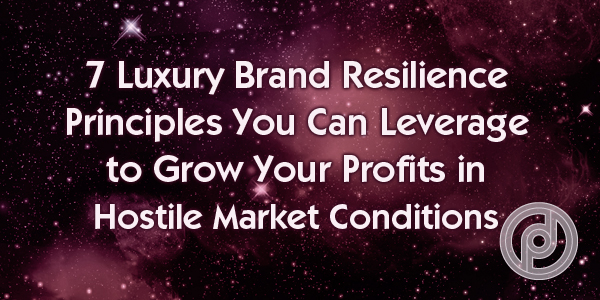
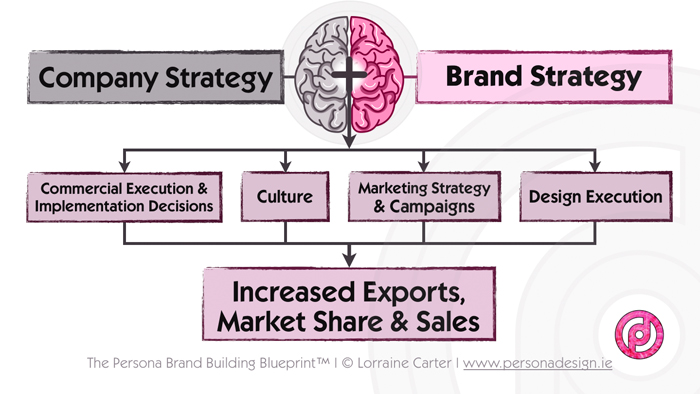
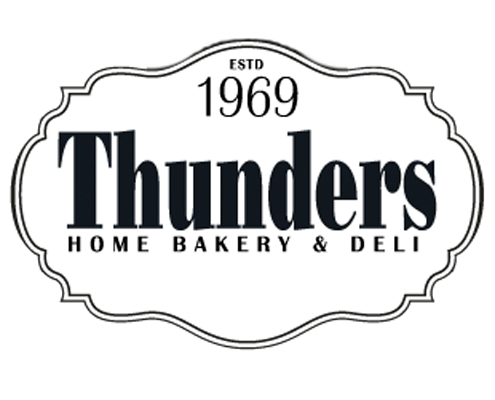 “We participated in the Persona 7-Figure Business Building & Brand Strategy Mastermind 12 week online course. The 12 week program suited us as the weekly accountability spurred us on to get work done between sessions.
“We participated in the Persona 7-Figure Business Building & Brand Strategy Mastermind 12 week online course. The 12 week program suited us as the weekly accountability spurred us on to get work done between sessions.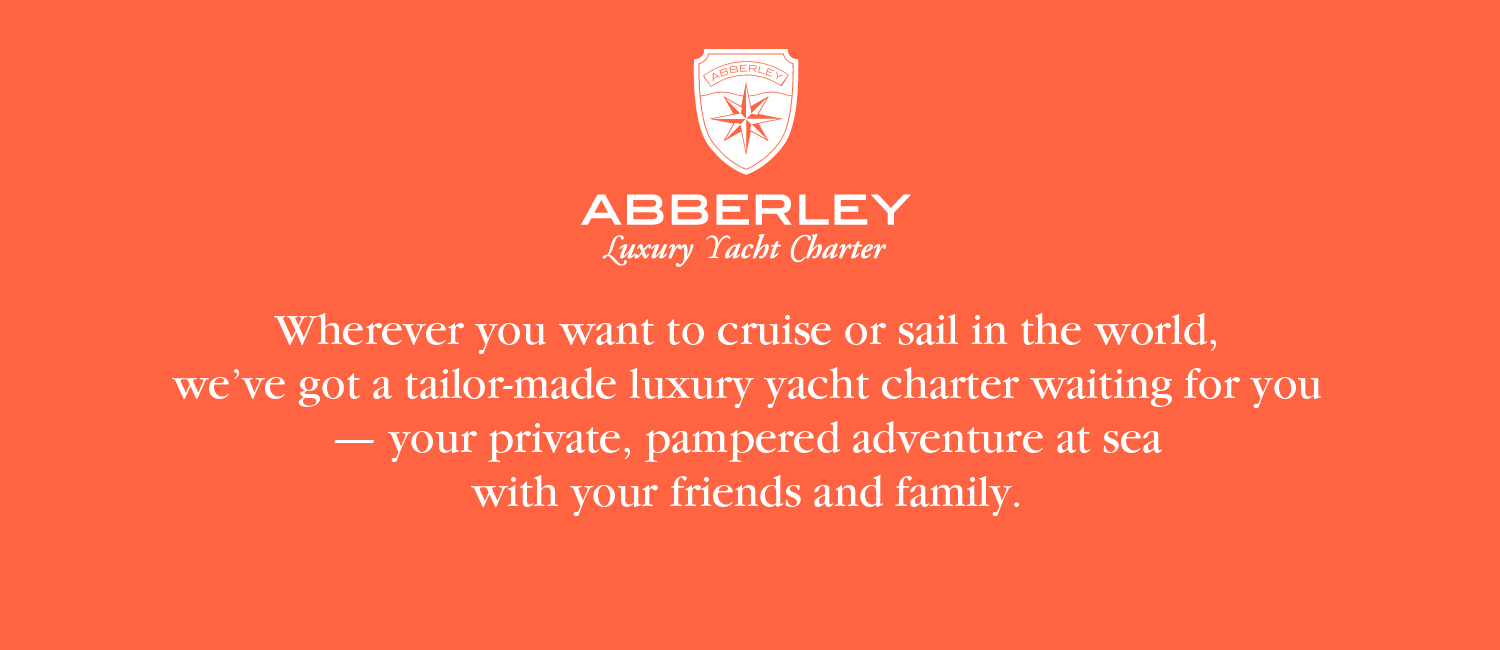
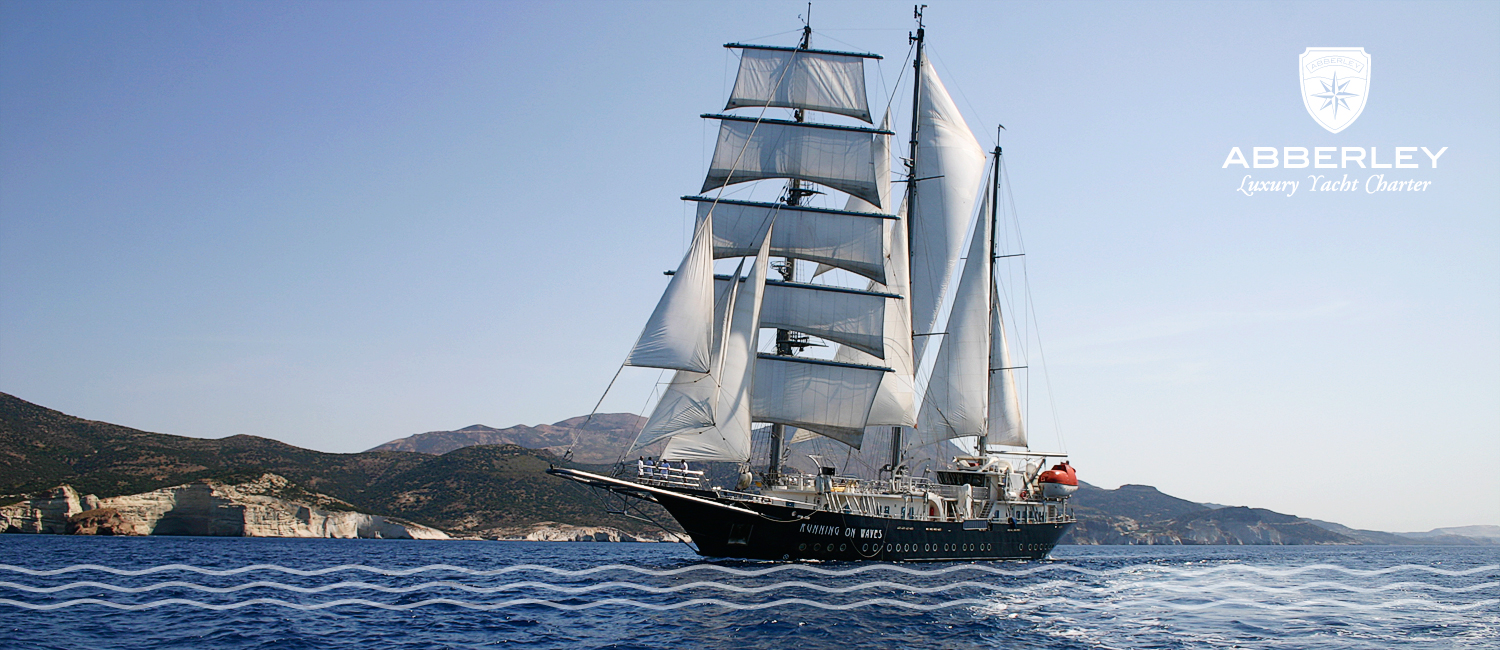
 “For anyone who has a well established business I would totally recommend working with Persona Design because it will provide them with a new perspective on how to think of their brand. You see in different markets and industries that are overly competitive
“For anyone who has a well established business I would totally recommend working with Persona Design because it will provide them with a new perspective on how to think of their brand. You see in different markets and industries that are overly competitive 

